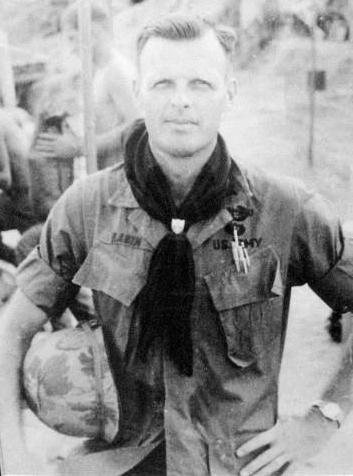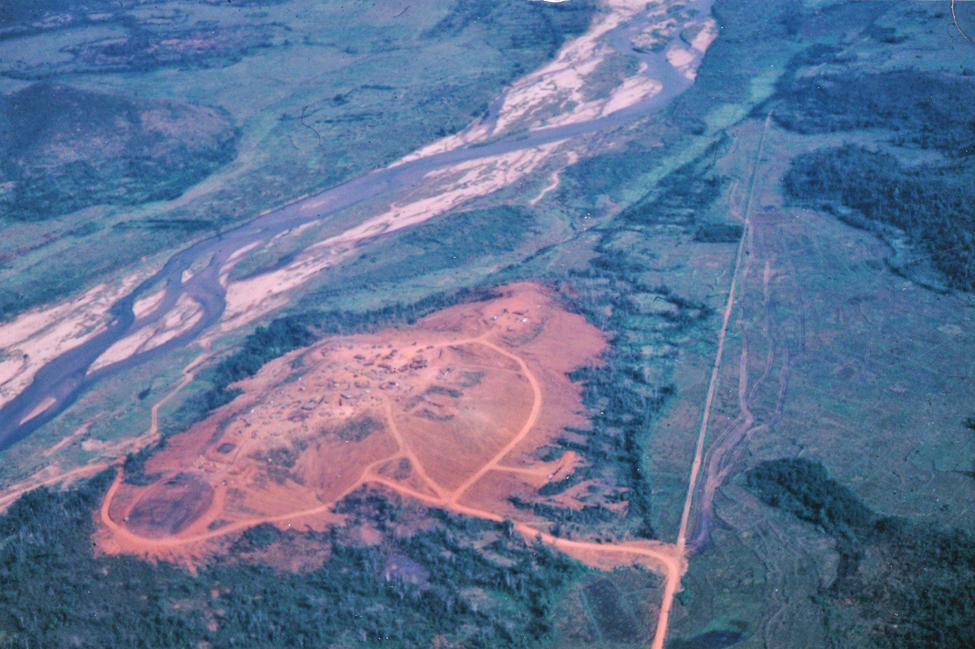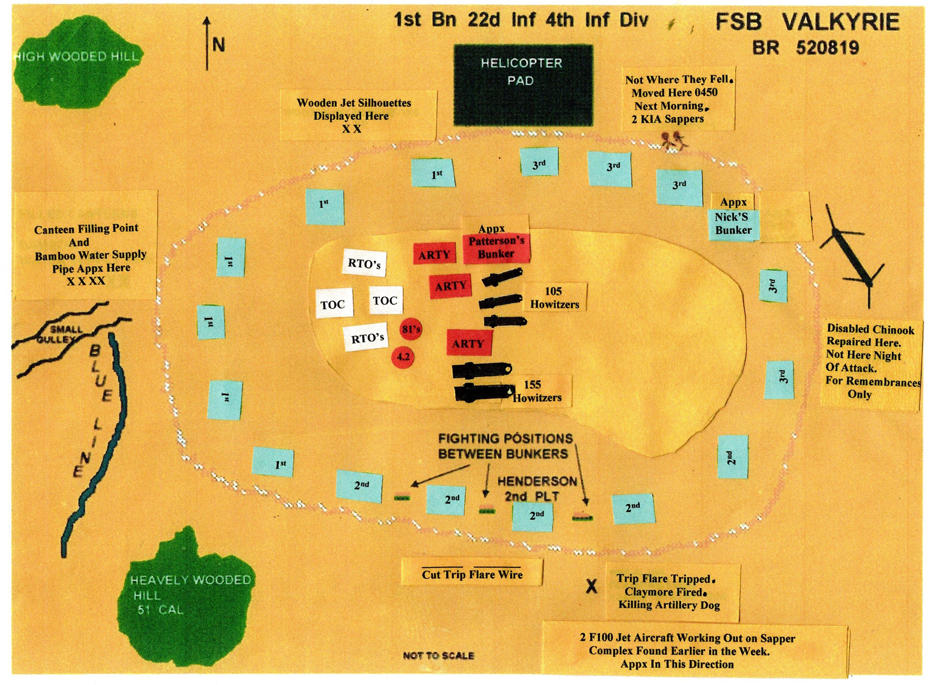![]() 1st Battalion 22nd Infantry
1st Battalion 22nd Infantry ![]()
Personal Recollections
of Cambodia
And Attack on LZ Valkyrie
By James Henderson B/1-22, 2nd Platoon
When the choppers landed at what was to be our firebase, we were surprised to see that an ABC news crew had accompanied us, he was not on the same chopper that I was on but on one of the other Huey’s. The newsman was ducking down running, and his camera man was filming as they went. It was a cold landing zone, meaning we were not being fired on at that time. Later I learned that his name was Steve Bell of ABC News. I have tried mightily to find footage of that but have been unsuccessful.
|
ABC News
correspondent Steve Bell and cameraman |
Bravo Company lucked out, or so we thought, and drew the duty of breaking ground on the new firebase, LZ Valkyrie. The name Valkyrie derives from Norse Mythology. The Valkyries were warrior maidens who rode through the air in brilliant armor, directing battles and conducting the souls of slain heroes to the hereafter. Major Ronald Rabin, the Battalion Commanding Officer, or CO, chose the name for the firebase.

Major Ronald Rabin
Photo courtesy of Bob Babcock
Major Rabin remarked later “Some interesting incidents happened in Cambodia early on, like when a two-gun section of 155mm Howitzers with a fire direction team arrived unannounced and set up on that first day on LZ Valkyrie.”
155mm Howitzer at FSB Valkyrie – Cambodia May 1970
Photo courtesy of Tom Buhrkuhl |
|
The 4th Inf Div generally operated on the Battalion size scale. A Battalion being appx 800-1,000 men, 500-600 infantry spread among 5 line companies A, B, C, D, and E and assorted support personnel including artillery and mortars. Each infantry Company being appx 100 men. We built battalion bases in the areas where we conducted our operations, known as our Area of Operations, or simply AO. A firebase was appx 1-to-2-acre sites, a football field being 1 acre, but they were generally not football field shaped. More often than not they were sort of roundish, but it actually depended on the terrain, as usually they were built on a mountain top or at least on the highest ground available. A company of infantry would be spread in a circle around the perimeter of the firebase. We dug bunkers, by hand, and put log and sandbag roofs on them. Perhaps 12-15 bunkers with 5-6 men per bunker surrounding the perimeter. We would clear fields of fire out in front of us to as great a distance as possible so that, hopefully, we could visually see any enemy approaching.
The inside of the circle would have the artillery, generally a battery of 105 howitzers, a battery being 4 cannons. Some mortars and RTO’s, Radio Telephone Operator’s, and our command staff completing the interior of the firebase.
|
105 mm Howitzer, Crimson
and Clover
Photo courtesy of Tom Buhrkuhl |

Not built on a mountain top but on a high hill along a river. Typical firebase construction for illustration only, not LZ Valkyrie

Collaborative Representation of LZ Valkyrie
On that very first day, 7 May, it was Delta Company that jumped from the frying pan into the fire while sweeping a bunker complex and engaging in a fierce firefight that left 1 US WIA and 1 US KIA. 1LT Terry Don Baxter, from Tulsa Oklahoma, paid the ultimate price. NVA casualties were 2 WIA, 4 KIA. Delta Co finds lots of bamboo huts, which we refer to as hootches, all manner of equipment including brand new medical supplies, clothes, bicycles, rice, dishes and more.
|
LT Terry Baxter |
Later that night, on our first night at LZ Valkyrie, Bravo Company observes flashlights and movement from the bunker line. It was to be an omen of things to come.
Home | Photos | Battles & History | Current |
Rosters & Reports | Medal of Honor | Killed
in Action |
Personnel Locator | Commanders | Station
List | Campaigns |
Honors | Insignia & Memorabilia | 4-42
Artillery | Taps |
What's New | Editorial | Links |